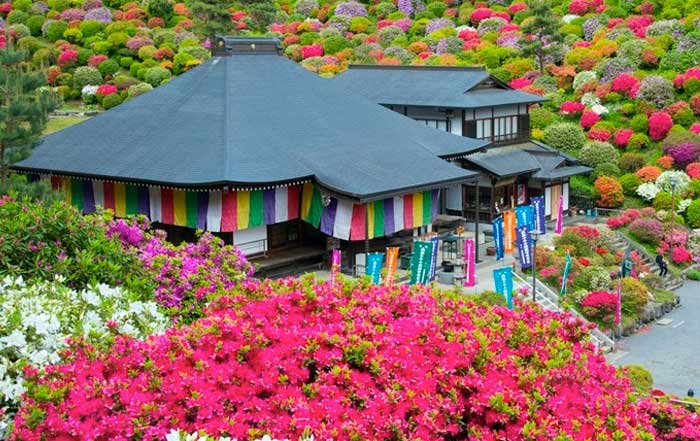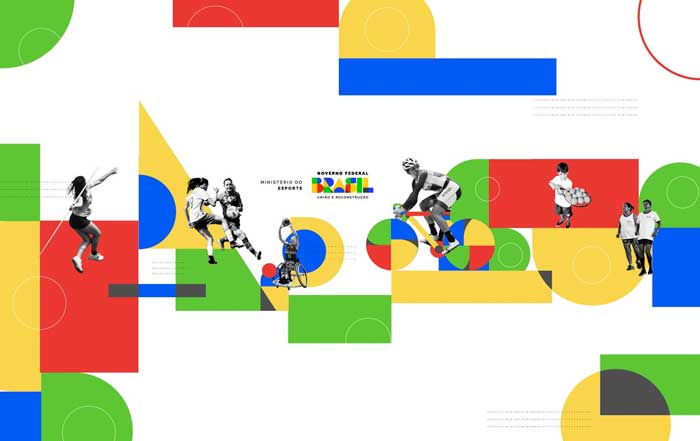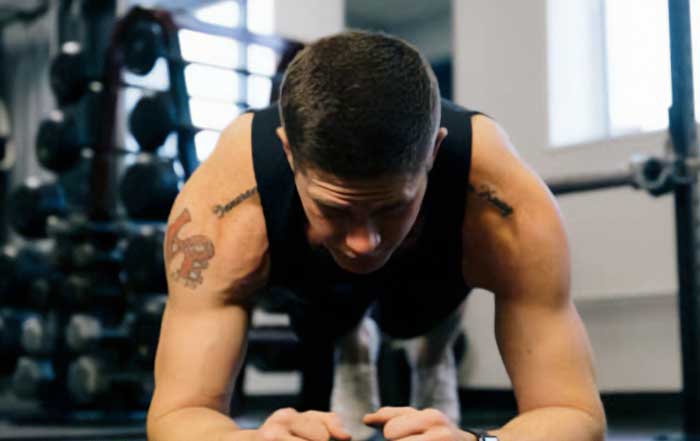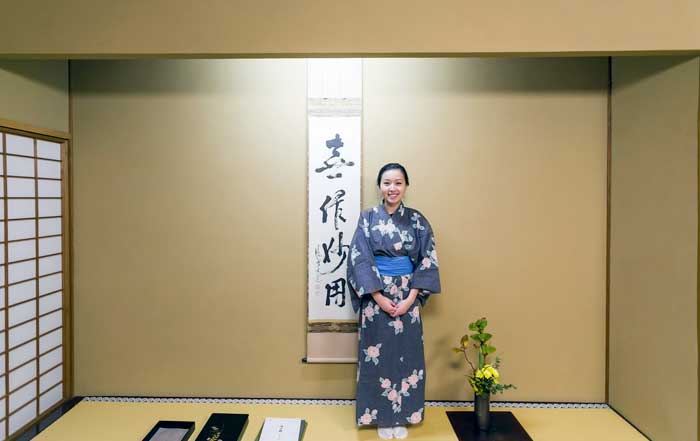Japan has long been regarded as the world’s foremost model for healthy aging, not only because it boasts the highest average life expectancy on Earth but also because it continues to expand the science and culture of wellness that underpin its remarkable demographic achievements. In these times, as much of the world grapples with aging populations, soaring healthcare costs, and widening health disparities, Japan stands out as a living laboratory where tradition and innovation merge to produce extraordinary results in human longevity.
According to the World Health Organization, Japanese women now live an average of 87.7 years, while men live around 81.5 years — the highest national averages globally. Yet the real success story is not just longevity, but healthspan, the number of years lived in full health. In Japan, the gap between total life expectancy and healthy life expectancy is still wide, roughly 11 years, but it is shrinking faster than in most countries. This evolution reflects an enduring national commitment to public health, social solidarity, preventive medicine, and research-led policy.
The country’s ability to combine centuries-old lifestyle philosophies with cutting-edge biomedical science is attracting intense interest from international researchers, investors, and public health experts. For readers of WellNewTime, which examines wellness, health, and the environment from a global and integrative perspective, Japan’s experience offers profound insights into how nations can redesign aging to be a period of vitality rather than decline.
The Demographic Context: An Aging Society Redefining Health Priorities
In 2025, Japan’s population is approximately 123 million, down from a peak of 128 million in 2010. Nearly 30% of citizens are aged 65 or older, representing the highest proportion of elderly people in the world. By 2040, that figure could reach 34%, creating both immense pressure and unprecedented opportunity for reimagining how societies approach wellness and care.
This demographic transformation, often termed the “silver tsunami,” is reshaping every facet of Japanese life — from healthcare delivery to robotics, from city planning to employment structures. Yet Japan’s approach to aging is less about crisis management and more about cultivating resilience and prevention. The national focus has gradually shifted from curing disease to maintaining function, preventing decline, and fostering long-term wellness.
Government programs like Health Japan 21 (the second term) have been instrumental in setting quantitative targets for healthier living, emphasizing early screening, lifestyle modification, and community health engagement. Between 2010 and 2020, life expectancy increased by more than two years for men and women alike, while lifestyle-related diseases such as hypertension, obesity, and diabetes were modestly reduced through diet and fitness education programs.
To explore how Japan’s cultural and health models intersect, readers can visit WellNewTime’s wellness section, where holistic approaches to health are explored in depth.
Research Foundations: Institutions Driving Longevity Science
Okinawa’s Centenarian Studies and the “Blue Zone” Effect
Japan’s most iconic longevity research originates in Okinawa, one of the world’s recognized Blue Zones — regions where people live measurably longer lives. Since the 1970s, the Okinawa Centenarian Study has examined why residents enjoy exceptional longevity and minimal chronic disease. The findings consistently highlight a synergy of factors: nutrient-dense plant-based diets, social cohesion, physical activity, and strong cultural values of moderation and gratitude.
The Okinawa Research Center for Longevity Science (ORCLS) continues this work by integrating genomics, metabolomics, and lifestyle data. Recent findings show that many Okinawan centenarians share unique genetic variants related to cholesterol regulation, inflammation control, and DNA repair — but researchers stress that genetics explains only part of the story. Environmental and behavioral factors, such as the “hara hachi bu” principle (eating until 80% full) and strong community bonds known as moai, are equally crucial.
This holistic understanding aligns with Japan’s broader model of preventive health — one that emphasizes balance rather than biomedical extremism. Visitors can read more about related wellness traditions at WellNewTime’s lifestyle page.
National Institutions and Policy Frameworks
Japan’s Ministry of Health, Labour and Welfare (MHLW) and the National Institute of Public Health (NIPH) oversee large-scale longitudinal studies examining physical, mental, and social determinants of health. Programs such as Japan Gerontological Evaluation Study (JAGES) and the Japan Longitudinal Study of Aging (JSTAR) track tens of thousands of participants across multiple prefectures, generating some of the world’s richest data sets on aging.
One landmark initiative is the Japan Healthy Aging Project, launched in collaboration with the World Economic Forum Centre for the Fourth Industrial Revolution Japan, which integrates big data, AI-driven diagnostics, and personalized medicine to design interventions that optimize wellness trajectories.
These efforts have global resonance: they represent a blueprint for integrating health data across sectors — government, academia, and private enterprise — while preserving privacy and equity.
The Role of Academia and Innovation Ecosystems
Universities such as Keio University, University of Tokyo, and Kyoto University have become hubs for longevity science. Keio’s Center for Supercentenarian Medical Research has catalogued over 200 verified individuals aged 110 or older, analyzing immune system profiles and gene expression patterns that may reveal biological signatures of exceptional aging.
Meanwhile, Kyoto’s ongoing advancements in induced pluripotent stem cell (iPSC) technology, pioneered by Nobel laureate Dr. Shinya Yamanaka, continue to fuel regenerative medicine research. This technology is now being explored for potential applications in organ repair, neurodegeneration, and even rejuvenation therapies.
🇯🇵 Japan's Longevity Timeline
Key milestones in health research and innovation (1970s–2025)
🔬Okinawa Centenarian Study
Research begins in Okinawa, one of the world's Blue Zones, examining exceptional longevity through diet, social cohesion, and cultural values like "hara hachi bu" and moai community bonds.
📋Health Japan 21 Initiative
Government launches comprehensive public health program setting quantitative targets for healthier living, emphasizing early screening, lifestyle modification, and community engagement.
🧬iPSC Nobel Prize
Dr. Shinya Yamanaka wins Nobel Prize for induced pluripotent stem cell technology, revolutionizing regenerative medicine research for organ repair and neurodegeneration.
🥗Washoku UNESCO Recognition
Traditional Japanese diet recognized as Intangible Cultural Heritage. Research confirms its role in lowering hypertension, metabolic syndrome, and Type 2 diabetes through fermented foods and balanced nutrition.
👁️iPSC Vision Restoration
Kyoto University begins clinical trials using autologous iPSCs to restore vision in macular degeneration patients, marking major milestone for regenerative medicine applications.
🤖Digital Health Integration
AI-powered health platforms link wearable data, genomic profiles, and preventive care. Japan Healthy Aging Study reveals bidirectional relationship between physical activity and sleep quality in older adults.
The Latest Discoveries in Health and Longevity (2024–2025)
Japan’s scientific landscape in 2025 is buzzing with new discoveries that bridge molecular biology, data science, nutrition, and social science.
The Japan Healthy Aging Study (J-HAS)
The Japan Healthy Aging Study (J-HAS), published in 2025 in collaboration with the National Center for Geriatrics and Gerontology, examined over 1,000 adults aged 70 to 90 using wearable health monitors. The study demonstrated a clear bidirectional relationship between daily physical activity and sleep quality — participants who walked more steps and spent less time sitting had longer, more restorative sleep, while consistent sleep patterns improved motivation for daytime movement.
This finding redefines how clinicians approach health maintenance for older populations. Instead of prescribing isolated exercise or sleep programs, interventions now target behavioral synergy — optimizing how movement, rest, and circadian rhythms interact.
The Role of Diet and Gut Health
Emerging research from Riken Institute and Kobe University has deepened understanding of how Japan’s traditional Washoku diet supports gut microbiome diversity. Studies show that fermented foods like miso, natto, and pickled vegetables foster beneficial bacterial strains that regulate inflammation and protect against metabolic syndrome. The Japanese gut microbiome, enriched with Bifidobacterium and Akkermansia, appears to correlate with extended healthspan.
This microbial resilience contrasts sharply with Western microbiomes often depleted by ultra-processed foods. Nutrition experts now argue that Washoku is not just cultural heritage but a scientifically validated longevity diet. Readers interested in nutrition-related wellness insights can visit WellNewTime’s health section.
Cellular Senescence and Anti-Aging Biotechnology
In 2025, Shiseido’s research arm announced a partnership with Tokyo Metropolitan Institute of Gerontology to study cellular senescence, focusing on how aging skin cells secrete inflammatory molecules that accelerate systemic aging. Their joint project, Skin as a Window to Systemic Health, explores topical and ingestible compounds that may reduce senescent cell accumulation, potentially extending both aesthetic and physiological youthfulness.
At the same time, biotech startups such as Senevita Japan and Rejuve Bio Asia are exploring senolytic compounds — drugs designed to selectively eliminate aged cells — and epigenetic reprogramming techniques inspired by Yamanaka factors. Early trials suggest mild rejuvenation of tissue markers in mice, but human applications remain years away.
Digital Health and AI Longevity Platforms
Japan’s push toward digital wellness ecosystems is accelerating. The Digital Agency of Japan has begun rolling out an integrated health platform linking personal wearable data, genomic profiles, and preventive-care recommendations through AI. This system, currently piloted in Kanagawa Prefecture, allows individuals to visualize their biological age, track biomarkers, and receive personalized advice on diet, exercise, and sleep.
AI-driven tools are also enhancing early disease detection. For instance, Fujifilm’s AI-powered medical imaging systems can detect early signs of dementia and cardiovascular risk through retinal scans — a technology already deployed in hospitals across Tokyo and Osaka.
These innovations demonstrate how Japan’s convergence of data science and wellness culture may set new standards for preventive medicine worldwide.
Cultural Foundations: The Soul of Japan’s Longevity
While laboratories, universities, and biotech startups drive much of the scientific momentum, Japan’s longevity miracle is deeply cultural. The nation’s daily rituals, social behaviors, and philosophical outlooks on life create an environment that nourishes both body and spirit.
The Washoku Diet: Tradition Meets Nutritional Science
The Washoku diet, now recognized by UNESCO as an Intangible Cultural Heritage, remains one of Japan’s greatest contributions to global wellness. It is a lifestyle rather than a mere nutritional framework — characterized by seasonal ingredients, smaller portions, and the principle of balance among taste, color, and nutrition.
Recent research by National Institutes of Biomedical Innovation, Health and Nutrition (NIBIOHN) confirms that adherence to the Washoku diet lowers the risk of hypertension, metabolic syndrome, and Type 2 diabetes. The combination of fermented foods like miso and natto, marine omega-3 fatty acids, and plant-based phytonutrients enhances gut microbiota diversity and stabilizes blood sugar regulation.
This connection between traditional diets and gut-brain health has made Japan a focal point for global microbiome studies. Scientists are discovering that fermented soy compounds and polyphenols may influence longevity-related genes such as SIRT1 and FOXO3A, linking molecular aging pathways directly to food culture.
To learn more about how nutrition shapes health and vitality, readers can explore WellNewTime’s health section and its growing archive on integrative diets and sustainable food practices.
Movement as Medicine
Japanese culture naturally integrates movement into daily life. Rather than framing exercise as a chore, physical activity is embedded in transportation, work routines, and social engagement. The morning Radio Taiso exercise broadcasts, first introduced in 1928, still reach millions of citizens each day, from schoolchildren to retirees.
The Japan Sports Agency reports that individuals who practice low-intensity but consistent daily movement have 25% fewer hospital visits over age 65 compared to sedentary peers. Researchers emphasize that this “movement frequency” approach — favoring sustainability over intensity — keeps cardiovascular and muscular systems resilient without the stress of overtraining.
Modern wellness companies have adapted these insights. Mizuno and Asics, leading Japanese athletic brands, are collaborating with healthcare institutions to develop footwear and wearables that encourage natural gait correction and posture alignment, supporting healthy aging through subtle biomechanical optimization.
Further exploration of fitness innovations and their role in daily wellness can be found through WellNewTime’s fitness section.
The Philosophy of Ikigai
At the heart of Japanese longevity lies ikigai — a philosophy of purpose and fulfillment that transcends age. Researchers at Tohoku University have found that older adults who maintain a strong sense of ikigai experience lower mortality risk, reduced inflammation, and improved cognitive function.
This psychological resilience is measurable. Longevity research increasingly views emotional stability and social belonging as biological variables. Chronic loneliness raises cortisol and inflammatory markers, while community engagement — prevalent in Japanese villages and urban cooperatives alike — acts as a natural immunomodulator.
The Okinawan practice of moai, or life-long friendship circles that share resources and emotional support, exemplifies this. By embedding individuals in mutual care networks, Japan has effectively turned social participation into public health infrastructure.
For readers exploring the intersection of purpose, mindfulness, and wellbeing, WellNewTime’s mindfulness page offers deeper insights into global approaches to purposeful living.
The Mental Health Dimension of Longevity
As Japan’s population continues to age, mental health has become a defining factor in sustaining healthy longevity. The traditional stigma surrounding psychological conditions has diminished in recent years, thanks to national initiatives and digital therapy innovations.
Cognitive Health and Dementia Prevention
The National Center for Geriatrics and Gerontology (NCGG) in Aichi Prefecture leads Japan’s most ambitious dementia research program. Recent findings from its Smart Aging Project reveal that regular cognitive stimulation — through reading, music, puzzles, and community learning — can slow the onset of cognitive decline by up to 30%.
Digital health tools are amplifying this effect. Platforms like Brain Life and Synapse Care Japan use AI to design personalized brain-training programs for seniors. Early trials funded by the Japan Science and Technology Agency (JST) show measurable improvements in memory recall and executive function over six-month periods.
Moreover, nutrition continues to play a pivotal role in cognitive protection. Polyphenol-rich green tea, abundant in catechins, has been associated with lower Alzheimer’s risk. Researchers from Kyushu University have identified that regular tea consumption promotes neuronal plasticity and reduces amyloid plaque formation.
These holistic approaches — combining mental activity, social connection, and diet — align seamlessly with the Japanese model of preventive wellness, which values harmony between body, mind, and environment.
For those interested in related global innovations, visit WellNewTime’s innovation section for current research linking technology and health.
The Environmental and Societal Landscape of Healthy Aging
Urban Design and Environmental Wellbeing
Longevity is not only a matter of biology or behavior; it is profoundly influenced by environment. Japan’s cities are among the most walkable and transit-oriented in the world. Sidewalk accessibility, clean air, safe public spaces, and efficient public transport make it easier for older adults to remain active and socially engaged.
The Tokyo Metropolitan Government’s 2030 Vision for Age-Friendly Cities aims to retrofit urban infrastructure for inclusivity. This includes expanding green corridors, barrier-free stations, and public seating areas that promote mobility. Researchers from University of Tokyo’s Institute for Future Initiatives have shown that residents living within 500 meters of a green park have 15% lower mortality rates, underscoring the health impact of environmental design.
Japan’s environmental awareness extends beyond city planning. Sustainability and wellness are intertwined, reflected in everything from eco-friendly architecture to urban gardening programs that encourage intergenerational participation. Readers can explore these themes further at WellNewTime’s environment page.
Climate Change and Public Health Resilience
Japan’s geographic vulnerability to heatwaves, typhoons, and natural disasters has shaped its public health preparedness. The government’s Climate and Health Initiative (CHI 2025) integrates environmental monitoring with community-level health alerts, focusing on preventing heat-related illness among seniors.
Rising summer temperatures have increased dehydration and cardiovascular incidents among the elderly, prompting municipalities to introduce “Cool Stations” — climate-controlled public shelters offering hydration and medical checkups. This model is now being studied by international agencies as a template for climate adaptation in aging societies.
At the same time, renewable energy policies are expanding clean air benefits. A joint study by Riken and Tokyo Institute of Technology found that reduced fine particulate matter (PM2.5) exposure could extend healthy life expectancy by nearly two years across urban populations.
These environmental investments demonstrate Japan’s understanding that longevity begins with planetary health — a principle shared by global sustainability leaders such as Denmark and Sweden.
Technological Frontiers: The New Science of Rejuvenation
Japan’s research institutions and biotech firms are playing an increasingly central role in the global race to decode biological aging.
Genetic and Epigenetic Insights
A landmark 2025 study from Keio University’s Human Longevity Laboratory mapped 1,200 genomes of centenarians and supercentenarians, identifying rare protective variants in genes related to DNA repair and mitochondrial function. The study also revealed that individuals with high expression of SIRT6, a “longevity enzyme,” showed better cellular energy efficiency and lower incidence of metabolic disease.
Parallel research in epigenetic reprogramming — resetting cellular identity to a younger state without losing function — is being pioneered at Kyoto University’s Institute for Integrated Cell-Material Sciences (iCeMS). Although still in preclinical stages, the potential of such interventions to reverse aspects of aging at the molecular level could redefine geriatric medicine.
Regenerative Medicine and Stem Cell Therapy
Japan remains at the forefront of stem cell therapeutics, especially through iPSC technology developed by Dr. Shinya Yamanaka. In 2024, Kyoto University researchers began clinical trials using autologous iPSCs to restore vision in macular degeneration patients, marking a milestone for regenerative medicine. The same approach is being studied for cardiac and spinal repair.
At the Center for iPS Cell Research and Application (CiRA), scientists are also investigating how rejuvenated stem cells might combat sarcopenia, the age-related loss of muscle mass. Early findings suggest that restoring youthful mitochondrial function in muscle stem cells can slow or even reverse physical frailty.
These developments have sparked growing collaboration between Japan’s academic researchers and private biotech sectors, with companies like Fujifilm Cellular Dynamics investing heavily in commercializing regenerative therapies.
To understand how innovation intersects with lifestyle, readers can explore WellNewTime’s business page, which tracks global developments in biotech and wellness industries.
Economic Dimensions: The Rise of Japan’s Longevity Economy
The aging of Japan’s population is often framed as a social burden, yet in 2025 it is increasingly seen as a major driver of economic innovation. The Japan Cabinet Office projects that the domestic longevity economy—industries directly serving older adults—already exceeds ¥100 trillion (approximately USD 660 billion) annually and is expected to grow by 40% over the next decade. This sector encompasses everything from healthcare and pharmaceuticals to robotics, wellness tourism, and financial planning for extended lifespans.
Major corporations, research institutions, and startups alike are redefining what aging means in a consumer economy. Companies such as Panasonic, Sony, and Toyota have expanded into age-tech, developing technologies designed to improve the quality of later life. Panasonic’s “Smart Care Home” concept integrates remote health monitoring, voice-assistive devices, and AI-driven emergency response systems for elderly residents. Meanwhile, Toyota’s Human Support Robot (HSR), originally designed for rehabilitation centers, has been adapted for in-home assistance—enhancing both mobility and social connection among older users.
In wellness and healthcare, Shiseido and POLA Orbis continue to bridge biotechnology and beauty, investing in anti-aging research at the cellular level. Shiseido’s Life Science Institute recently announced progress on identifying “youth-associated secretomes,” signaling molecules that promote tissue regeneration. These findings blur the boundary between cosmetic enhancement and true longevity intervention.
Japan’s innovation in this field illustrates a profound global truth: longevity is not just a medical concern, but an economic paradigm. Healthy populations are productive populations, capable of extending their participation in society while reducing long-term healthcare costs. The ripple effects of this shift are being studied across the United States, Germany, and Singapore, all eager to emulate Japan’s success in transforming demographic aging into a source of innovation.
Readers can follow the evolving relationship between health and business in WellNewTime’s business section, where longevity-related industries are examined through a global economic lens.
The Global Influence of Japan’s Longevity Model
Japan’s leadership in health and longevity research extends far beyond its borders. Its policies, scientific frameworks, and social models have influenced dozens of countries seeking to improve health outcomes and reduce healthcare expenditure amid aging populations.
The “Healthspan” Revolution
Global health organizations now use the Japanese approach as a benchmark for designing healthspan-oriented policies. Rather than measuring success by life expectancy alone, countries such as Australia, Norway, and Canada have adopted Japan’s focus on extending healthy life expectancy (HALE)—the years lived free of major illness or disability.
This paradigm shift is evident in the World Health Organization’s Decade of Healthy Ageing (2021–2030) framework, which Japan helped shape. The model integrates physical health, mental well-being, social engagement, and environmental safety into one metric of successful aging.
For instance, Japan’s nationwide emphasis on social participation through community centers and volunteer programs has been replicated in parts of Europe and Southeast Asia. Studies show that retirees who engage in structured community activity have significantly lower risks of cognitive decline and depression—a finding now central to policy discussions across the European Union.
Data-Driven Policy Design
Japan’s advanced data infrastructure allows policymakers to evaluate public health interventions with remarkable precision. The integration of national health insurance data, longitudinal surveys, and AI analytics provides evidence-based insights that other countries often lack.
In 2025, the Japan Digital Health Initiative expanded real-time health monitoring to over 20 million citizens, making Japan a pioneer in population-level health analytics. The ability to predict hospital admissions, track lifestyle patterns, and identify early disease risks has revolutionized preventive care delivery.
The global potential of such systems is immense. Nations like the United Kingdom and South Korea are now studying Japan’s health data ecosystem to improve predictive healthcare models and reduce medical expenditures.
For additional coverage on technological advancements in healthcare, readers can visit WellNewTime’s innovation section, which explores how digital systems are redefining wellness.
Ethical Considerations in Longevity Science
As Japan pushes deeper into biological and technological frontiers, ethical and philosophical questions inevitably arise. What does it mean to extend life indefinitely? Who will have access to these breakthroughs? And how do societies maintain equity in an era where longevity may become stratified by wealth or geography?
Equity and Access
One of the pressing concerns involves equitable access to longevity-enhancing therapies. While public health programs ensure universal healthcare, cutting-edge treatments—such as senolytics, stem cell therapies, and AI-guided preventive care—are often expensive and concentrated in urban centers like Tokyo and Osaka. Rural populations risk being left behind, creating a potential “longevity divide.”
The Japanese Society for Biomedical Ethics (JSBE) is actively studying how to integrate advanced geroscience into the public system without deepening inequality. Its 2025 white paper calls for a “Longevity Equity Act,” urging transparent regulation, subsidized access to regenerative therapies, and strong oversight to prevent commercialization from outpacing ethical responsibility.
The Philosophy of Aging
Beyond policy, longevity science challenges Japan’s spiritual and cultural values. Traditionally, aging in Japan has been viewed with reverence; elders are seen as repositories of wisdom, not subjects for perpetual rejuvenation. But the emergence of “biohacking” subcultures and anti-aging clinics catering to wealthy clientele introduces tension between modernity and heritage.
Philosophers like Dr. Tetsuya Ogata of Waseda University argue that Japan must define longevity not as “escaping age” but as “deepening life.” This perspective emphasizes purpose, connection, and dignity—aligning with the timeless principle of ikigai that underpins Japanese well-being.
Such reflections are increasingly relevant globally as biotech innovation accelerates. The ethical foundation Japan builds now may shape how humanity negotiates the intersection of biology, technology, and meaning in the coming decades.
Readers can explore similar ethical discussions in WellNewTime’s world section, where thought leaders analyze the cultural implications of scientific progress.
Integrating Wellness, Community, and Policy
Social Infrastructure for a Healthy Society
Japan’s experience demonstrates that longevity is not the outcome of medical technology alone—it depends on social architecture. Local governments play a vital role in cultivating wellness at the neighborhood level.
Programs such as Community Integrated Care Systems (CICS) coordinate hospitals, home care providers, volunteer groups, and public facilities to create seamless health ecosystems. This model empowers elderly citizens to remain in their homes while receiving coordinated medical, social, and nutritional support.
The CICS framework is now being emulated by municipalities in France, Singapore, and New Zealand, which recognize that human connection and social infrastructure are the most cost-effective health interventions of all.
The Role of Preventive Care
Preventive medicine is the cornerstone of Japan’s public health success. Every adult is encouraged to undergo annual health checkups, known as “Ningen Dock.” These comprehensive assessments—covering cardiovascular, metabolic, and oncological indicators—enable early diagnosis and intervention long before disease becomes symptomatic.
Such vigilance explains Japan’s exceptionally low mortality from preventable conditions. The Japan Cancer Society reports that early screening and vaccination programs have reduced cervical cancer rates by 60% and hepatitis-related liver cancer by nearly 40% over the past decade.
International agencies, including the OECD, now cite Japan as a global exemplar of how preventive medicine can extend healthspan while maintaining economic sustainability.
For practical wellness approaches grounded in prevention and balance, readers can visit WellNewTime’s wellness page.
Longevity and the Future of Work
An often-overlooked consequence of increased lifespan is the transformation of work and employment structures. Japan, which faces one of the most acute labor shortages among advanced economies, is pioneering age-inclusive employment models.
In 2025, new legislation raised the official retirement age to 70 and offered tax incentives to companies that retain or rehire workers past that threshold. Employers are adapting workplaces to accommodate mature employees—through ergonomic design, flexible hours, and upskilling programs tailored to cognitive longevity.
The result is a multi-generational workforce, where older employees mentor younger colleagues while remaining economically active and socially engaged. This model strengthens social cohesion and counters the isolation that often accompanies retirement.
Japan’s strategy has inspired corporate wellness reforms in countries like Germany and Canada, where employers now view older workers as assets rather than liabilities.
For related global trends in employment and human capital, readers can explore WellNewTime’s jobs section.
Japan’s Longevity Leadership in Global Research Collaboration
Japan’s leadership in longevity science increasingly depends on its role as a global collaborator. The International Research Center for Medical Sciences (IRCMS) at Kumamoto University has established partnerships with institutions in Switzerland, South Korea, and the United States, sharing data and methodologies to accelerate breakthroughs in gerontology.
The Tokyo University Aging Consortium collaborates with the Mayo Clinic and Stanford Center on Longevity on studies linking cellular senescence with metabolic resilience. Similarly, the Japan Agency for Medical Research and Development (AMED) funds global projects exploring age-related inflammation, brain aging, and molecular repair mechanisms.
These collaborations signal a new era of open-science longevity research, where discoveries in one region inform holistic strategies worldwide.
As Japan deepens its alliances, it reinforces its identity as both a cultural and scientific leader—a nation whose commitment to harmony extends into the biological understanding of life itself.
The Future: From Longevity to Legacy
As the global population ages, the question facing societies is no longer whether people will live longer, but how well they will live. Japan, in 2025, continues to show that health and longevity are not accidental outcomes—they are cultivated through alignment among biology, culture, environment, and technology.
The Japanese approach reveals that true wellness arises from balance: between tradition and innovation, individual care and community responsibility, scientific ambition and ethical restraint. Its lessons resonate globally:
That preventive care is more sustainable than reactive medicine.
That mental and social health are as vital as physical health.
That longevity without purpose risks becoming a hollow victory.
In a world where biotech may soon extend lifespans beyond a century, Japan reminds us that the ultimate goal is not immortality but quality of life—a life marked by connection, curiosity, and compassion.
At WellNewTime, we believe these values define the next frontier of human wellness. Whether through beauty and self-care practices, mindful living, or responsible innovation, the Japanese experience offers both scientific inspiration and philosophical depth for a planet searching for sustainable health solutions.
Conclusion: A Blueprint for the World
By blending traditional wisdom, advanced research, and social design, Japan has created a blueprint for global longevity. It demonstrates that aging can be reframed as an achievement of civilization rather than a burden on it.
From the laboratory breakthroughs of Kyoto University and Keio University to the community wellness initiatives thriving in Okinawa and Tokyo, Japan’s longevity model shows what is possible when public policy, science, and culture move in harmony.
In 2025, as the world faces shared challenges—climate stress, economic inequality, and demographic shifts—Japan’s evolving story of longevity serves as both mirror and guide. It calls upon nations to imagine health not as a privilege, but as a collective responsibility and a lifelong pursuit of balance.
The Japanese ethos of “kenkō to nagai inochi”—health and long life—remains as relevant today as ever. It reminds us that the pursuit of longevity is not only about living longer but about living better, in harmony with self, society, and the world.
Readers can continue exploring the future of wellness, global health innovation, and environmental sustainability through the full ecosystem of topics at WellNewTime.com.










